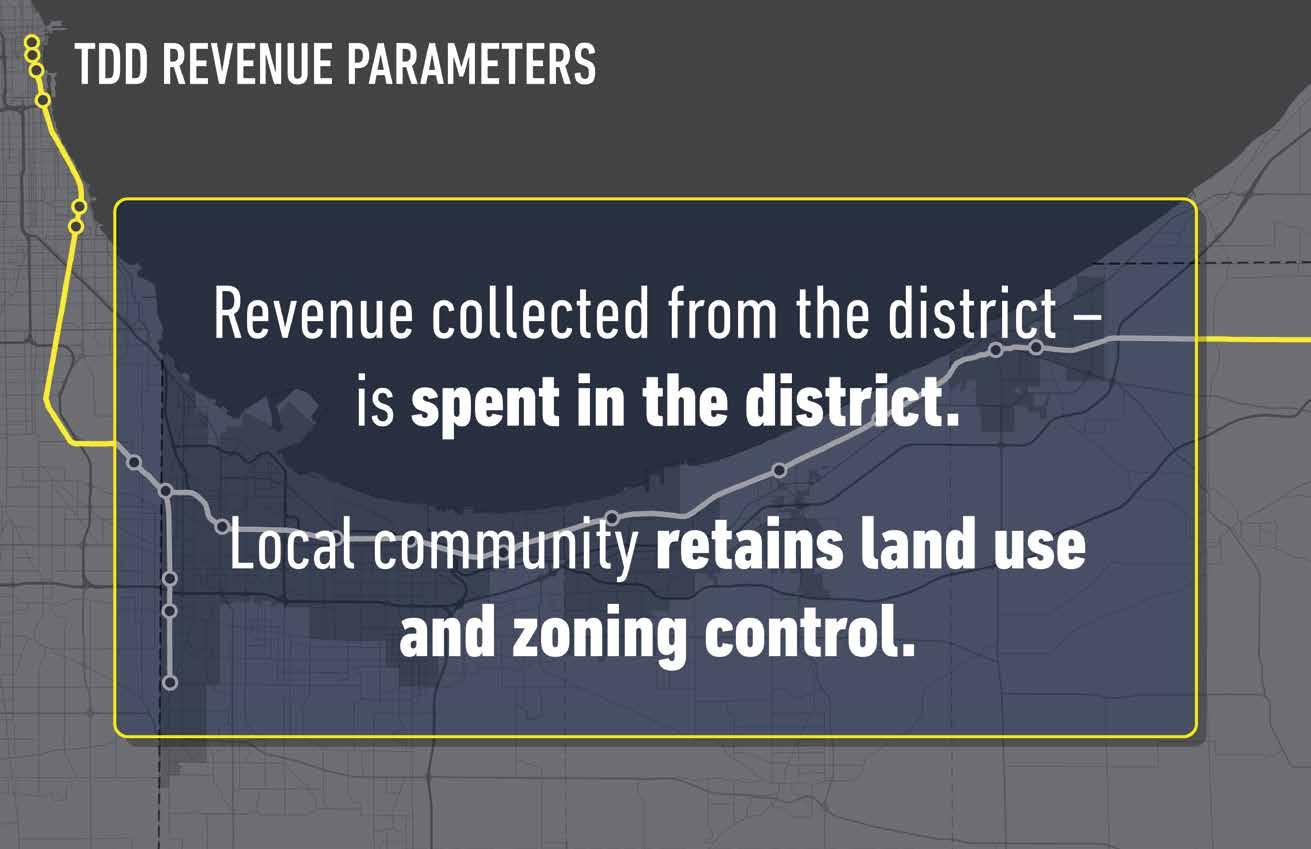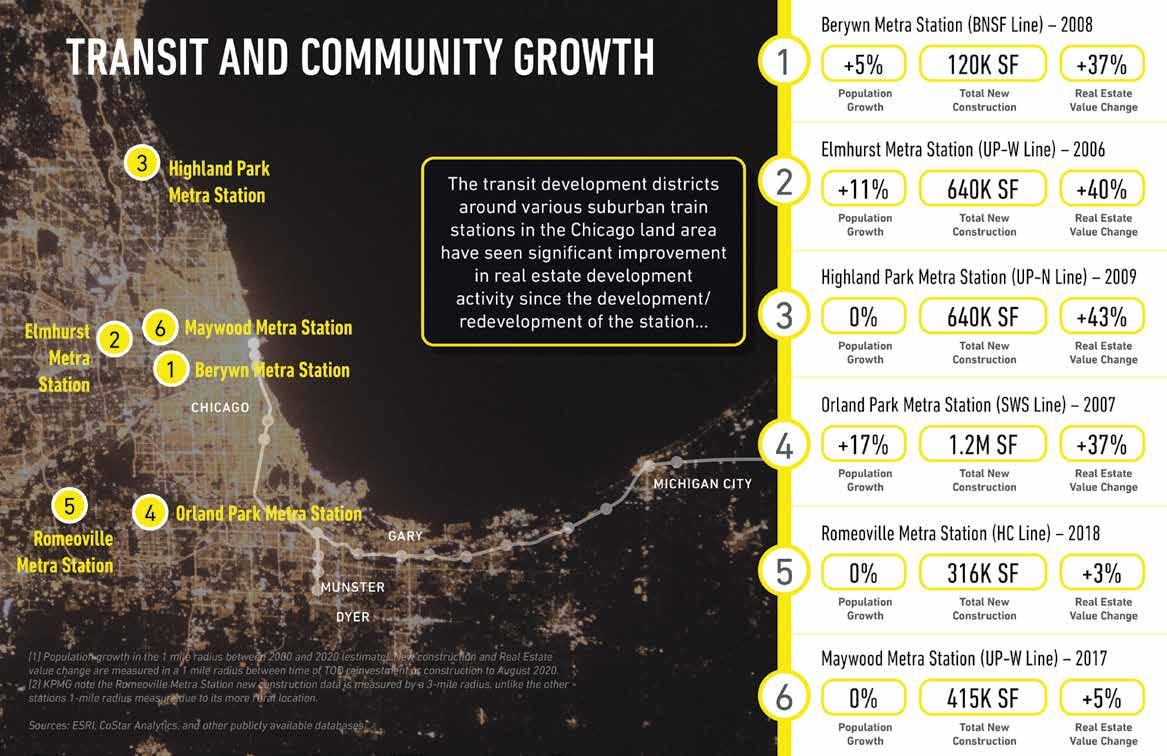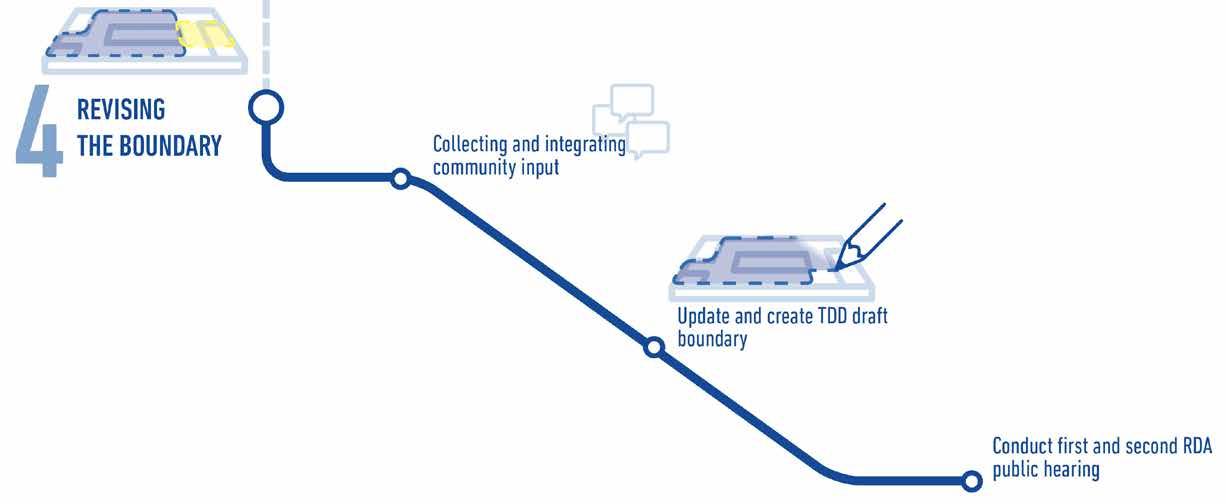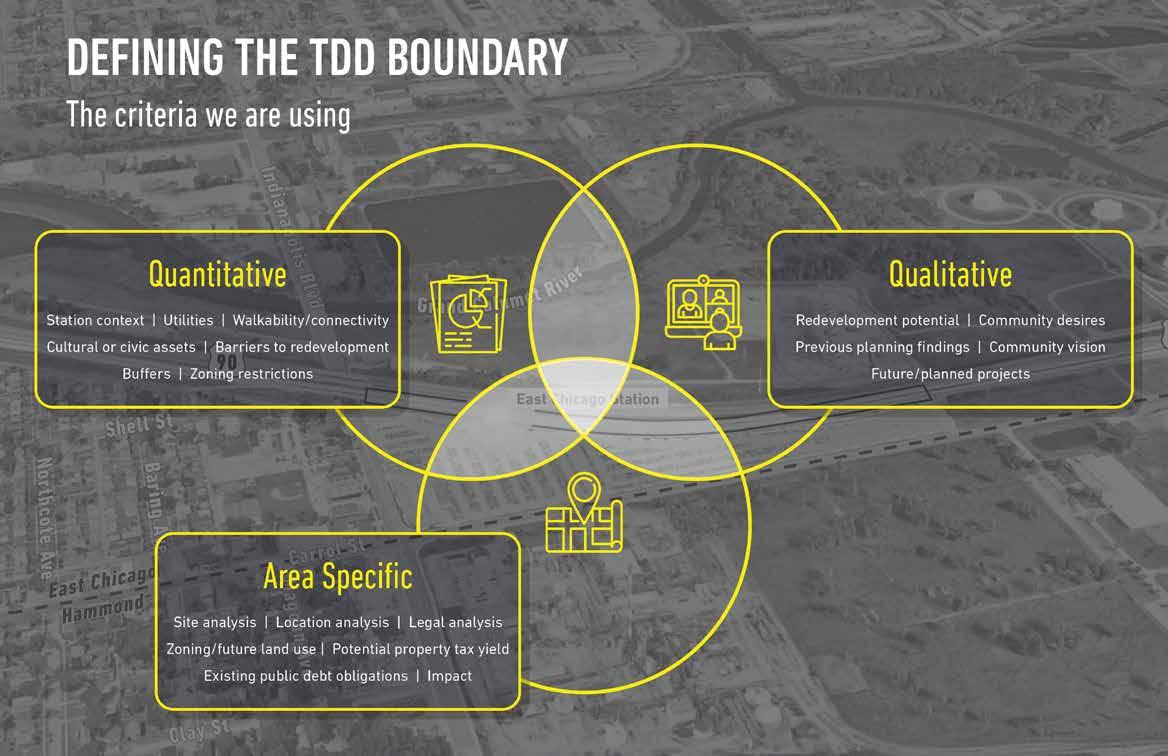
3 minute read
What is a TDD and How Does it Work?
from East Chicago Boards
by MKSK
2 | WHAT IS A TDD AND HOW DOES IT WORK?
East Chicago, IN Public Gallery For Community Feedback
What is a Transit Development District (TDD)?
The main focus is on promoting Transit-Oriented Development.
Transit development districts provide economic
tools and strategies to support local communities to implement high-quality transit-oriented development.

The goal is to create a boundary calibrated
specifically for each community based on analysis, areas of opportunity and the goals and visions of the community.
After consultation with local communities, two
public hearings must be held before the RDA approves the TDD boundaries for review and approval by the State Budget Committee.

TDD BOUNDARY BASICS This isn't just a boundary. It complements the economic growth path of communities.





A TDD is a special economic development district , not a rezoning or eminent domain tool. TDDs are contiguous boundaries drawn around station areas, and must be no more than 0.5 square miles (320 Acres) in area.


What is a TIF?
Tax increment financing districts divert property tax revenue increases in a defined area to fund economic development projects or public improvement projects in the community.
What is a TDD?
Transit development districts capture the incremental growth in local property and income tax revenue, for use in public investment related to the station area.
Across the Chicago region, TDDs have led to significant population growth, construction, and increases in property market value.


3 | TDD BOUNDARY PROCESS & CRITERIA

East Chicago, IN Public Gallery For Community Feedback
The process and criteria of defining a TDD boundary analyzed quantitative data, qualitative data, and site conditions.
Transit Development Districts boundary process includes site analysis, community input, best practices, and market analysis.
The TDD boundary process is comprised of four major steps:
1Becoming Familiar with the Station Area - research of previous and current planning and development efforts, demographic analysis, initial market understanding, and station area visits.
2Community Leadership Workshops - listening to needs, preferences, and development opportunities; discussing impressions and findings; learning of projects in the pipeline, touring the communities; and collaborative work sessions.
3Drafting the Boundary - collaboration with NICTD on station requirements and optimization, integrating community preferences, understanding market forces for economic development, understanding suitability of surrounding sites, understanding supporting infrastructure, and preparing information to report out findings. 4 Revising the Boundary - integrating community input, update and create draft TDD boundary, conduct second public engagement session.
TDD BOUNDARY PROCESS BOUNDARY CRITERIA

The four steps of the boundary process include research and analysis, collaborative work sessions, and community engagement.
Quantitative data, qualitative data, and site selection influenced the TDD boundary.



Several site characteristics were considered together to determine development opportunity and site selection.


Property is impacted within and near the boundary in various ways, from strengthening its market conditions to preserving or redeveloping.



